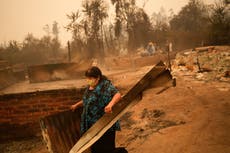More than a third of animals and plants in the US are at risk of extinction
The species at greatest risk of extinction include the Venus flytrap
More than a third of species in the United States are at risk of disappearing, according to a study published on Monday.
Some 40 per cent of animals and 34 per cent of plants are under threat of going extinct, and 41 per cent of ecosystems are at risk of collapse, according to sweeping report by the conservation group NatureServe, published exclusively by Reuters.
The assessment of the natural world was based on five decades of research and the work of more than 1,000 scientists in the US and Canada and zoned in on which places and species are most at risk.
Areas of where complex biodiversity butt up against booming human population growth and urbanisation see the highest percentage of species at risk: California, Texas and the US southeast.
The species at greatest risk of extinction include the Venus flytrap, a carnivorous plant endemic only to some wetlands in the Carolinas.
In total, about 1,250 plants are categorized as “critically imperiled” by NatureServe - the last stage before extinction.
Almost 50 per cent of cacti species and 200 types of trees are at risk of extinction. More than three-quarters of grasslands face dying out.
A wide array of threats are heightening the possibility of extinctions but include the climate crisis, invasive species, river pollution and habitat degradation.
Sean O’Brien, president of NatureServe, called the report’s findings “terrifying” and urged lawmakers to do more to protect the environment.
“If we want to maintain the panoply of biodiversity that we currently enjoy, we need to target the places where the biodiversity is most threatened,” Mr O’Brien told Reuters. “This report allows us to do that.”
Join our commenting forum
Join thought-provoking conversations, follow other Independent readers and see their replies
Comments


Bookmark popover
Removed from bookmarks